Poti is a particularly beautiful city for a lot of reasons, but the reason why some consider it to be a “Little Paris” has to do with the planned infrastructure of the city. It is very well organized and has been since day one. Frankly speaking, I opted to visit Poti in a whim after realizing that my plans to go to Machakhela were sort of doomed from the get-go. I hardly cared about Poti’s history, or what it may hold in its store for me when I got on to the minibus that was going there. I will not lecture you about what little I read on the Wikipedia about it, as you can easily do that yourself. Join me now, as I go over the best parts of my unexpected but much welcome day trip to Poti.
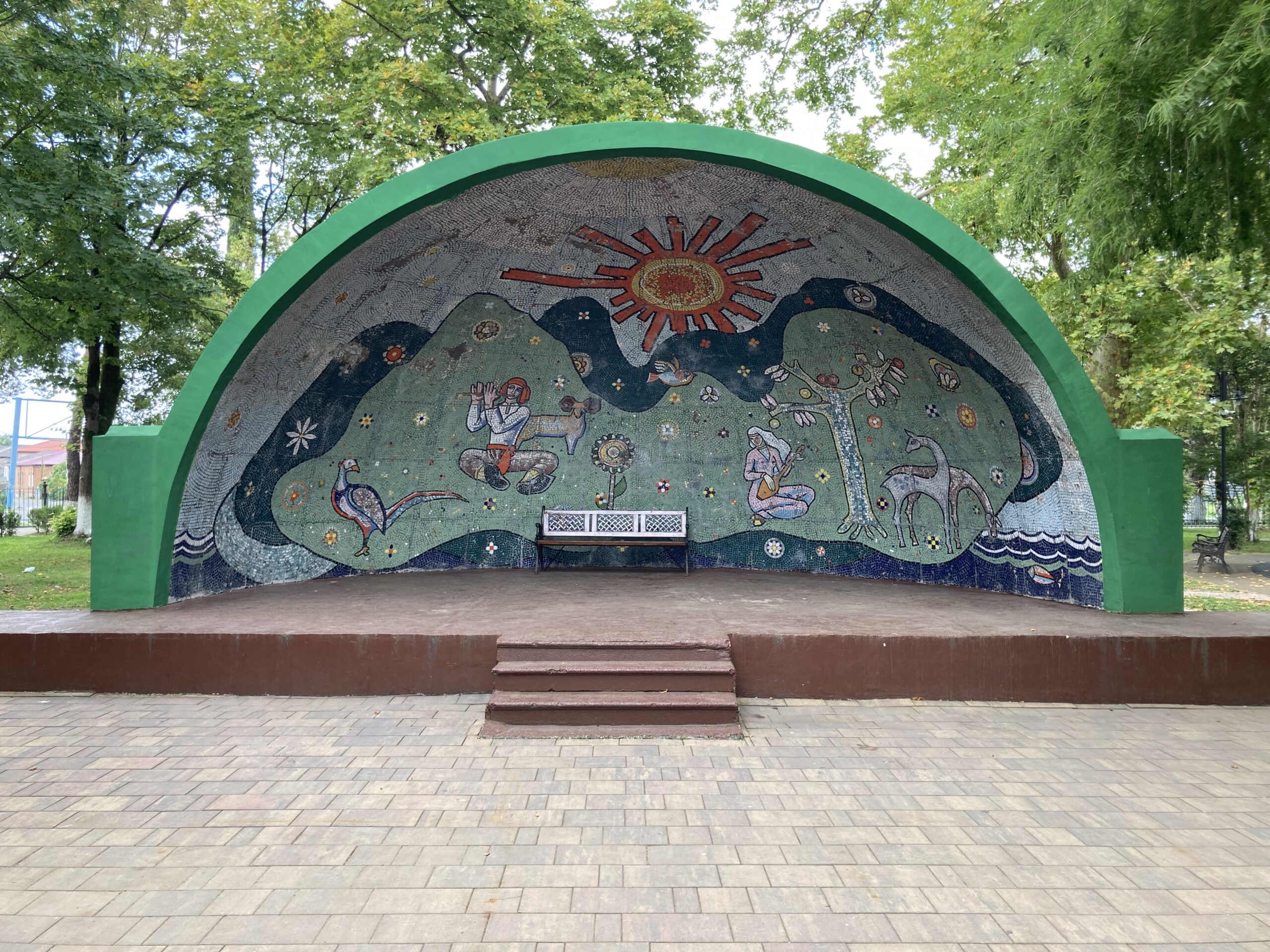
There is a rule in Georgia, the further away a space is to the big three cities (Tbilisi, Kutaisi, and Batumi), the better it will preserve its Soviet legacy. Far away from the prying eyes of governors and parliamentarians, the “old world remains” stay true to their former glory. This is most visible in the much better state all the Soviet mosaics are in such far-removed cities like Poti or Zugdidi. Of course, we are talking about Georgia here, even an hour drive’s away from Batumi or Kutaisi is considered to be far away, so keep that in mind. This mosaic was the first thing that I encountered in Poti, and it was a sign for all the good things to come.
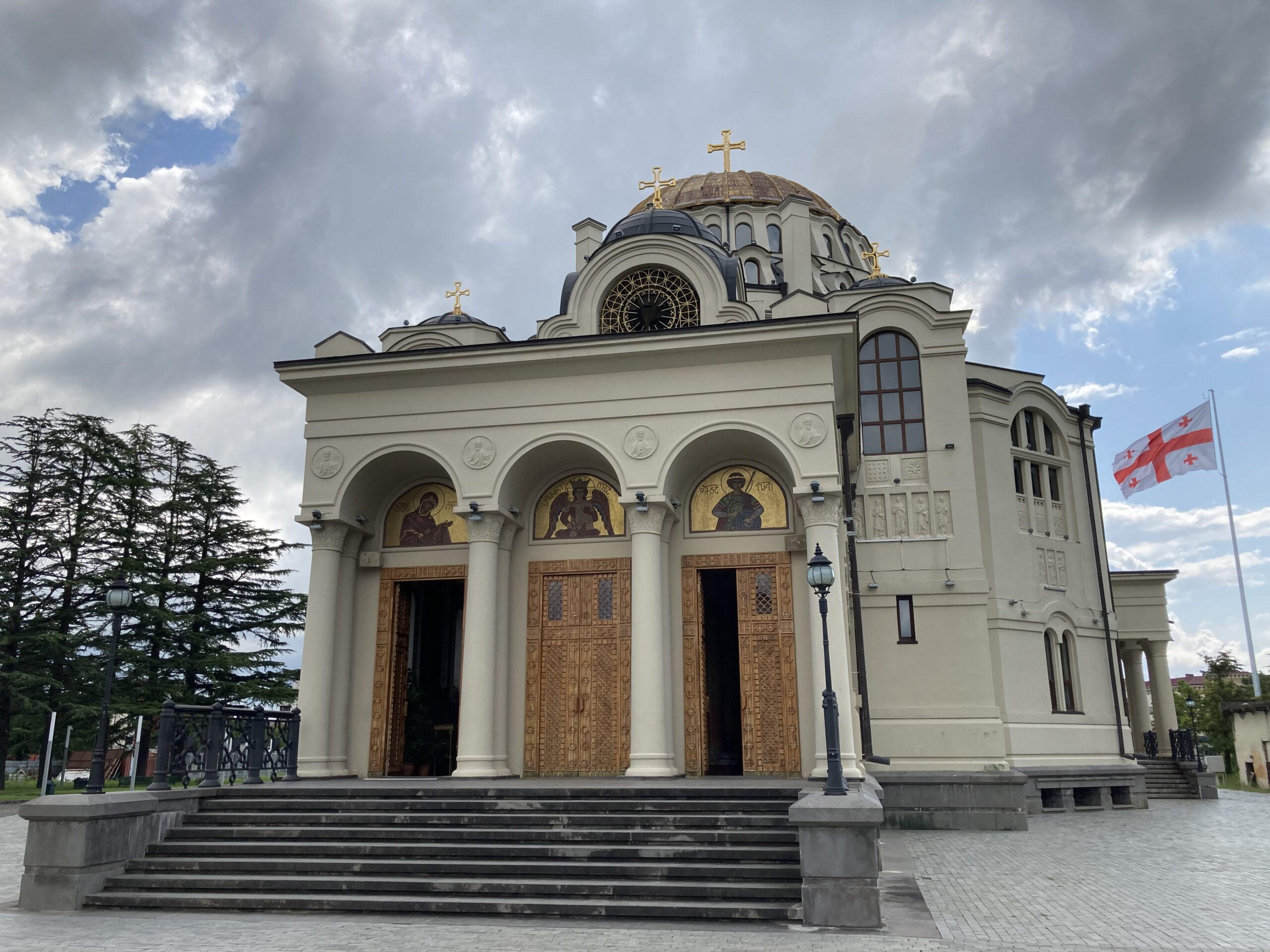
Poti’s St. Virgin Cathedral is erected ever so gracefully near the centre of this beautifully gridded out city. It is clearly inspired by the Hagia Sophia in Turkey. For a small city like Poti, I think the exterior is not only a good fit size wise but is also easy on the eyes.
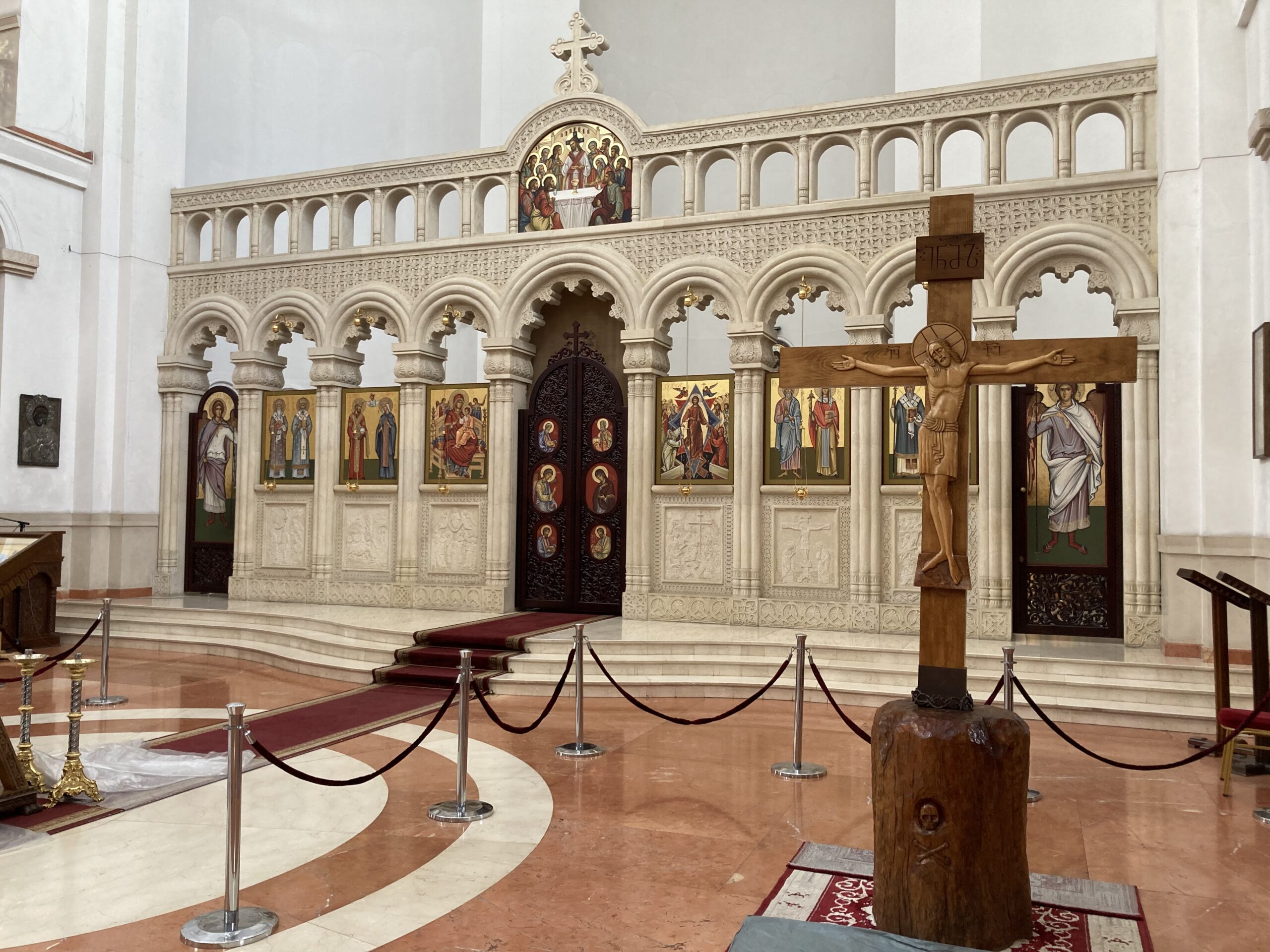
The interior, however, is lacklustre. I mean, from an Orthodox church, I had greater expectations. It is interesting to see the small skull and bones on the trunk beneath the depiction of Jesus’ crucifixion though. I did not see any such symbols before in this context and I would love to find out more about it. Sadly, since I was the only one in the church at the time, I had to leave with some questions on my mind.
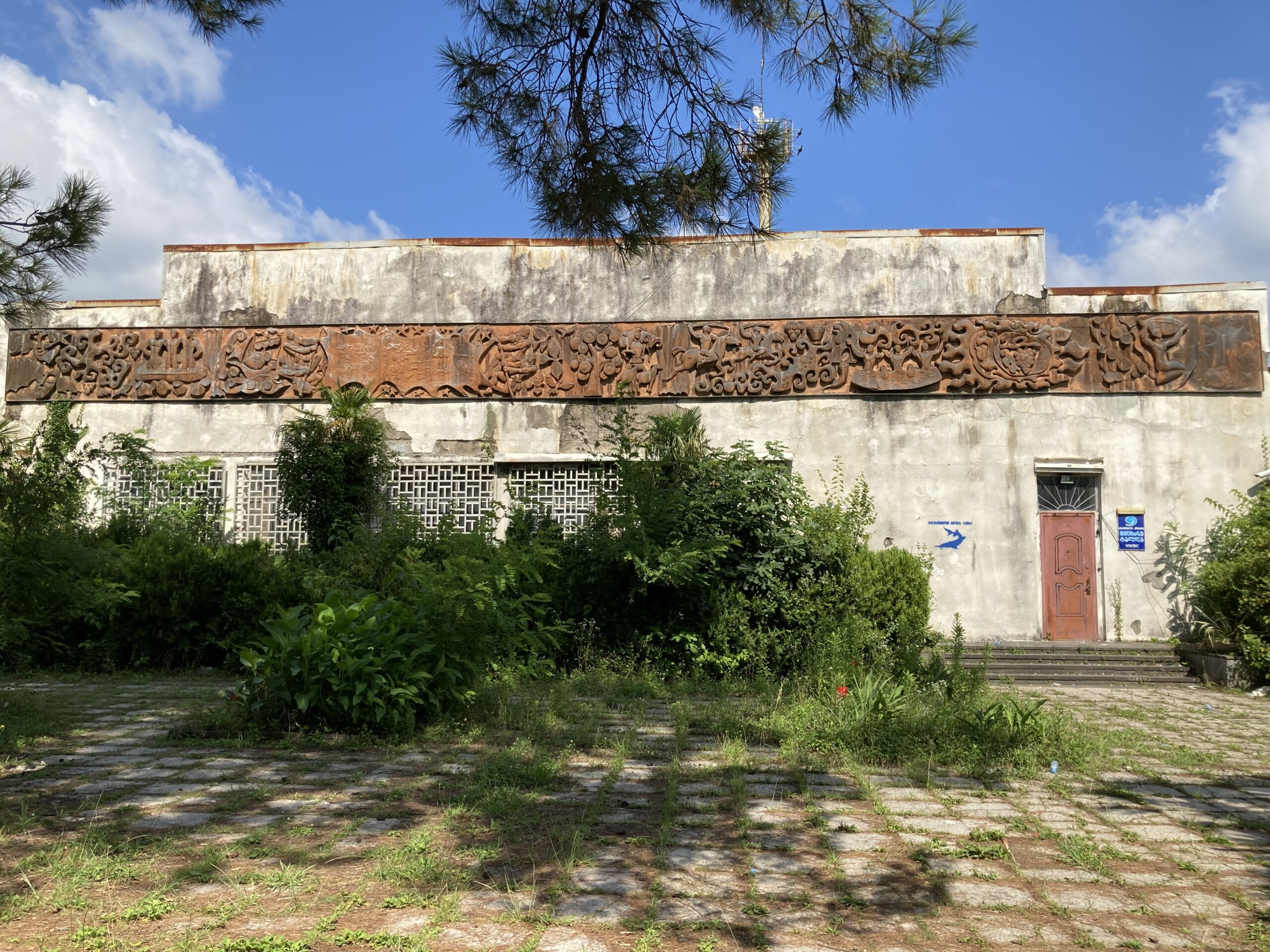
In fact, I was the only tourist in the whole town… At some point a few people were visibly staring at me, amazed that some weirdo from God knows where was walking around during this summer heat and taking photos of seemingly random stuff like this building. I could not find any information about it, but the name on that small sign suggests that it must house the city’s radio or something along those lines. The relief must be a remnant of the Soviet era.
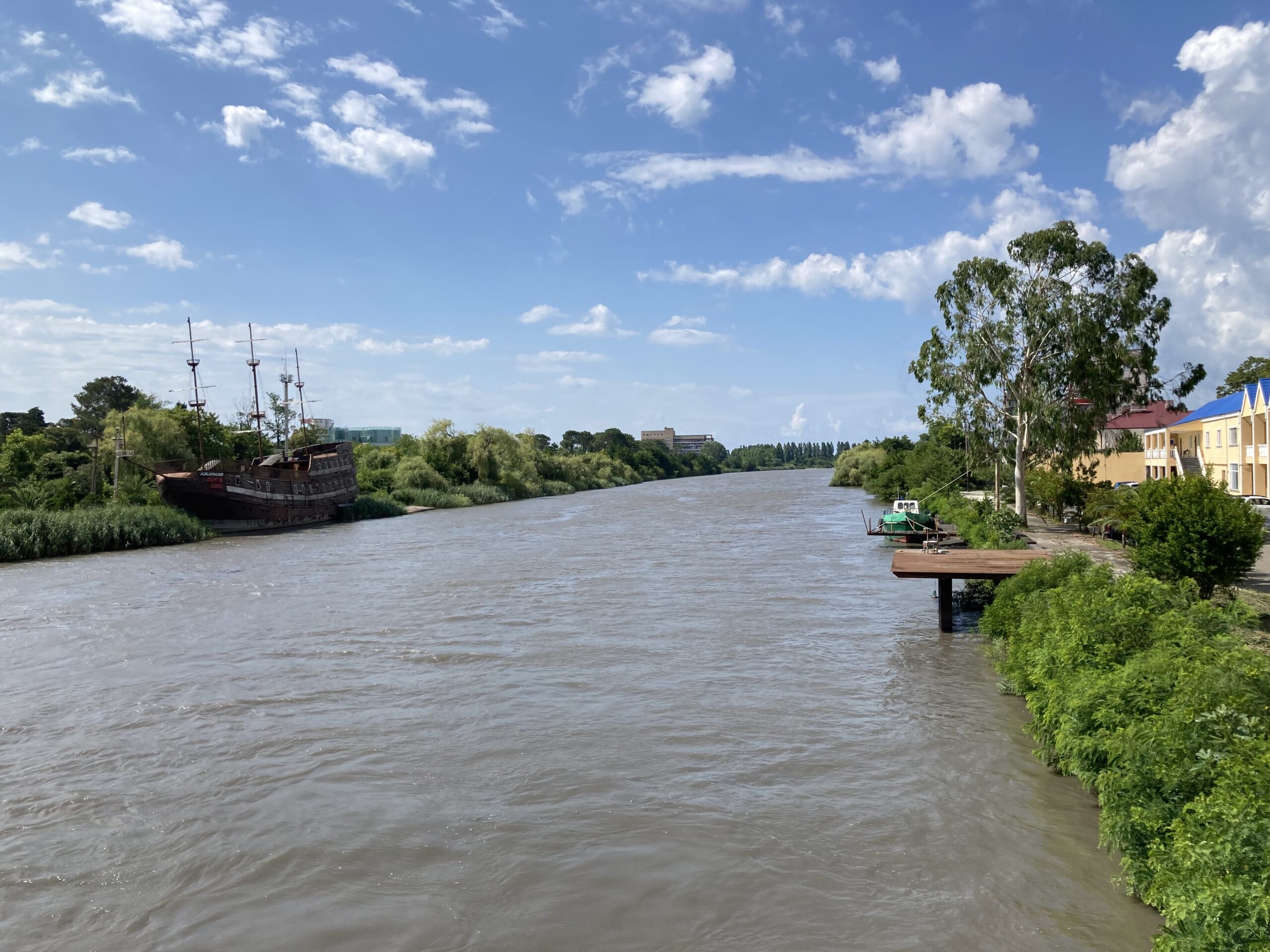
Perhaps the most interesting thing to note about Poti, for most foreigners or tourists that is, is the fact that it is the town that Jason and his argonauts allegedly used as an entry point to the ancient Kingdom of Colchis. From Phasis (Poti) they would sail to Aia (Kutaisi) using this river here, which is called Rioni today. I need to brush up on my knowledge of the ancient world and its denizens, but it sure sounds like a long journey to come here all the way from Greece.
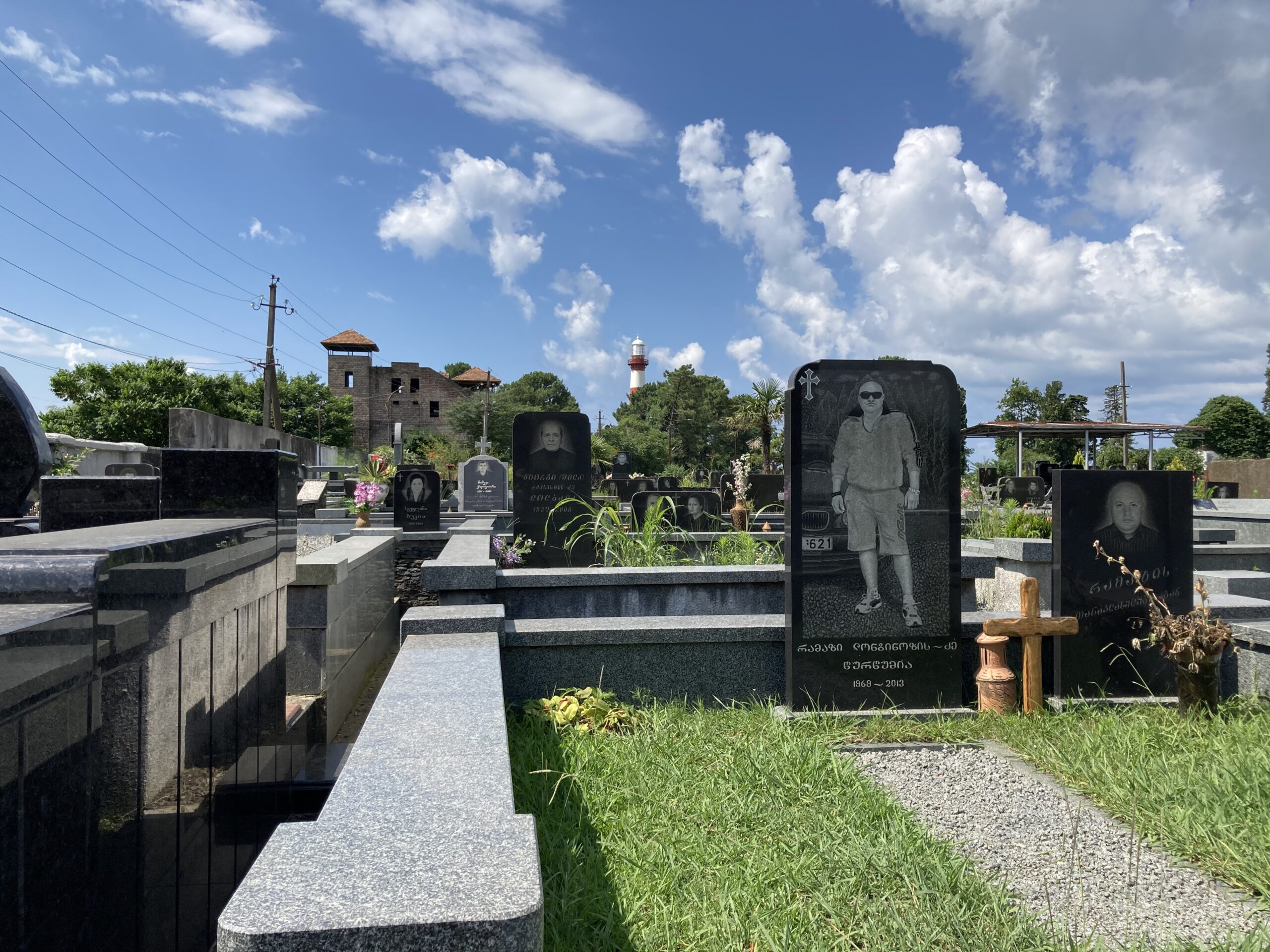
Given how little time I had to prepare this time around, and also because of the more “festive” aspect of this summer trip, I must admit that it had been one where I left with the most unanswered questions on my mind. For example, these tombstones with an engraved photo of whomever is laid to rest under it are very popular in Georgia, and I have no idea why. I do not recall noticing them in 2018, though most of these tombs predate that hence it cannot be a whole new craze. I asked a few people around to no avail. Regardless, it is simply amazing to see all these dead people so unmistakably alive in their photos, it really is a dream come true for historians/archaeologists of the future if they ever need to find out how people looked like in 21st century.
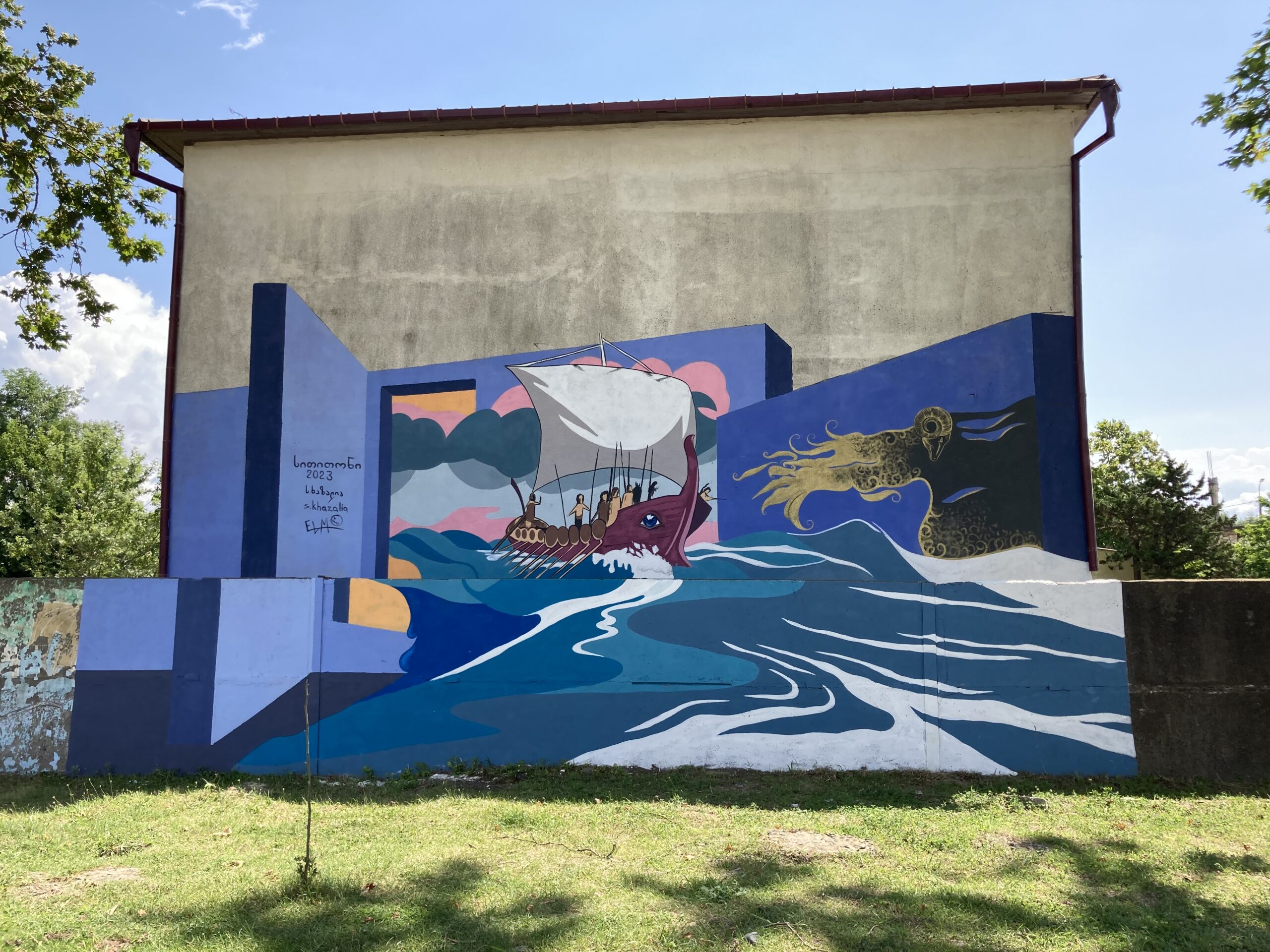
The story of how Jason and his argonauts came to Colchis to retrieve the golden fleece is a part of the popular culture here due to the city’s aforementioned relevance to this legend. One can even find these extremely new depictions of the said event on the side of a school building. It is not as cool as looking at a Soviet era mosaic, and my eyes did search for a Jason-themed mosaic from a Soviet artist, only to be disappointed at the end. I have a feeling that at one point there was a mosaic about Jason and his companions, but it may be destroyed within the last three decades.
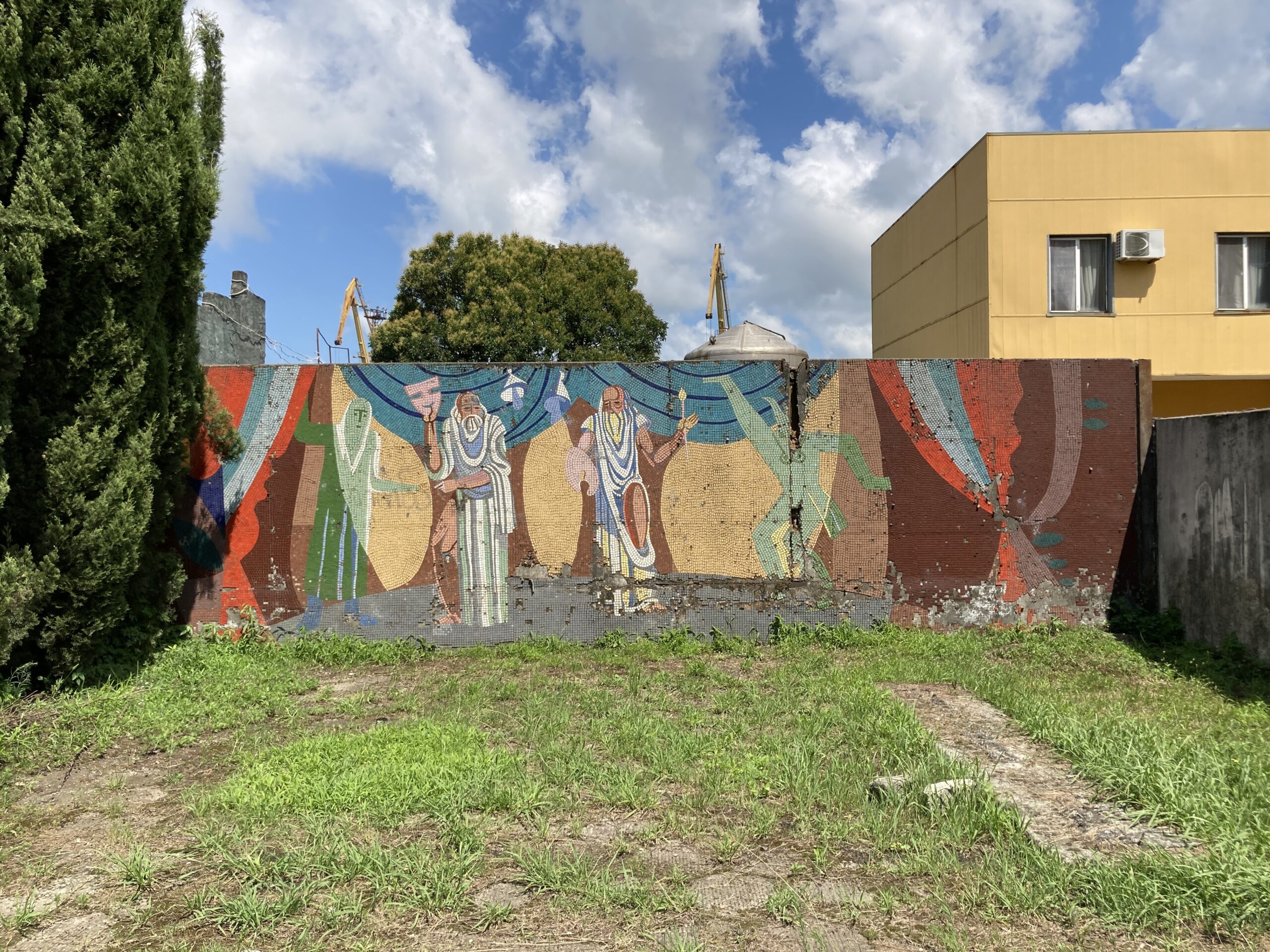
Though I could not find Jason and his argonauts depicted as a mosaic anywhere in the city, I did come across these. Poti is not only a very well-organized city with a strategic deep-sea harbour, but it is also a town with a lot of “things” to look at as you wander around its streets. There are sculptures all around, as well as an array of almost untouched Soviet mosaics and even a few reliefs. The pavements are well maintained and the leafy 9th of April Avenue that encircles almost a quarter of the city centre offers a much-needed escape from the scorching sun outside.
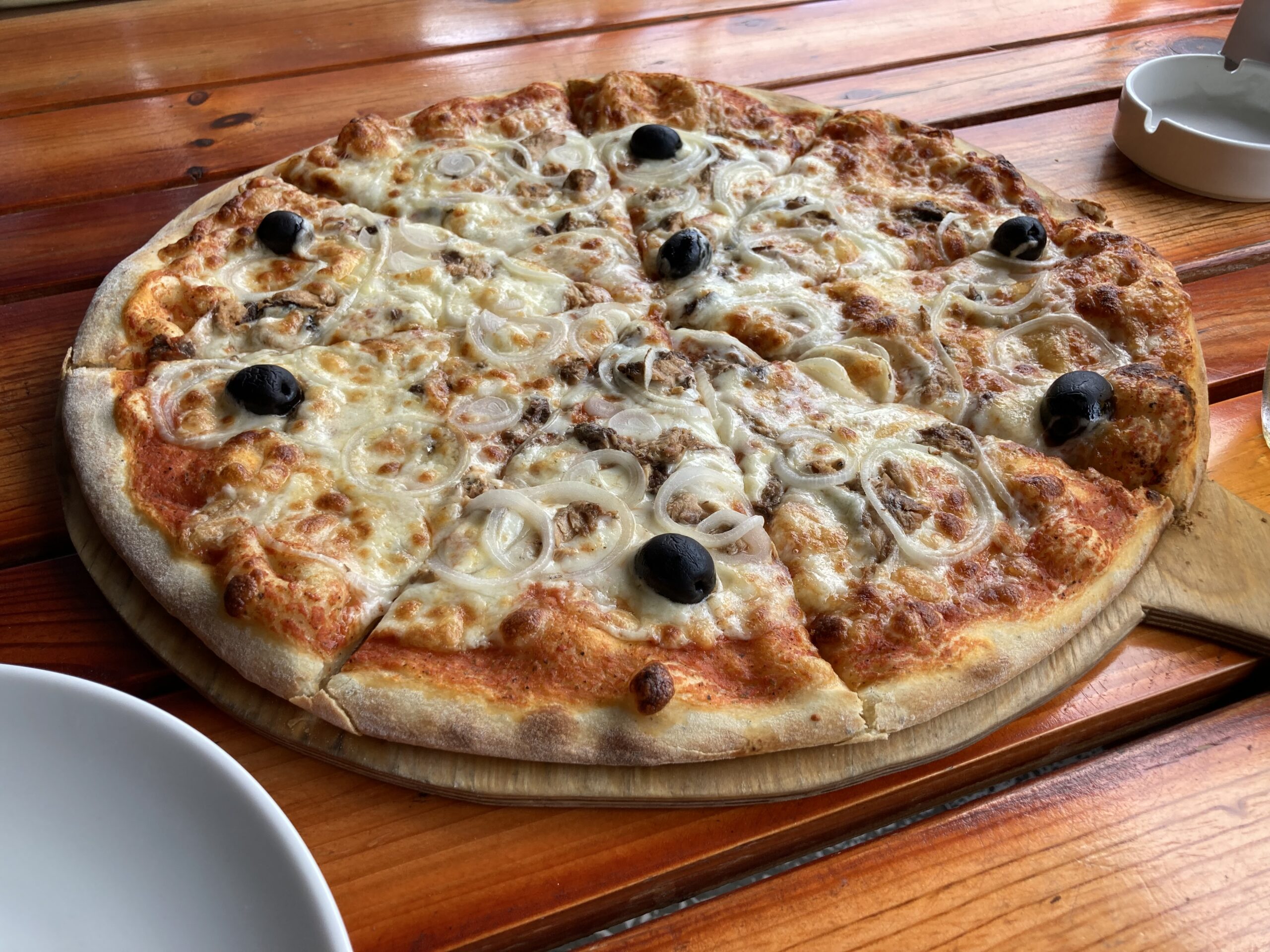
My day trip to Poti also reminded me of a very particular piece of information that I should try not to forget ever again: portion sizes are massive in the more rural towns no matter where you go. This large pizza was almost twice the size of any large pizza in Batumi, so suffice to say my stomach had a few things to say about my life choices after I decided to eat the whole pie to own up to my mistakes. There was no dinner that day, not for me at least, but I do not regret it one bit. The lovely lady that baked my pizza made sure to put enough tuna and onions to feed an entire family, and I loved her and her restaurant for that! You too can enjoy this monstrosity by visiting La Casa Della Pizza when you visit Poti.
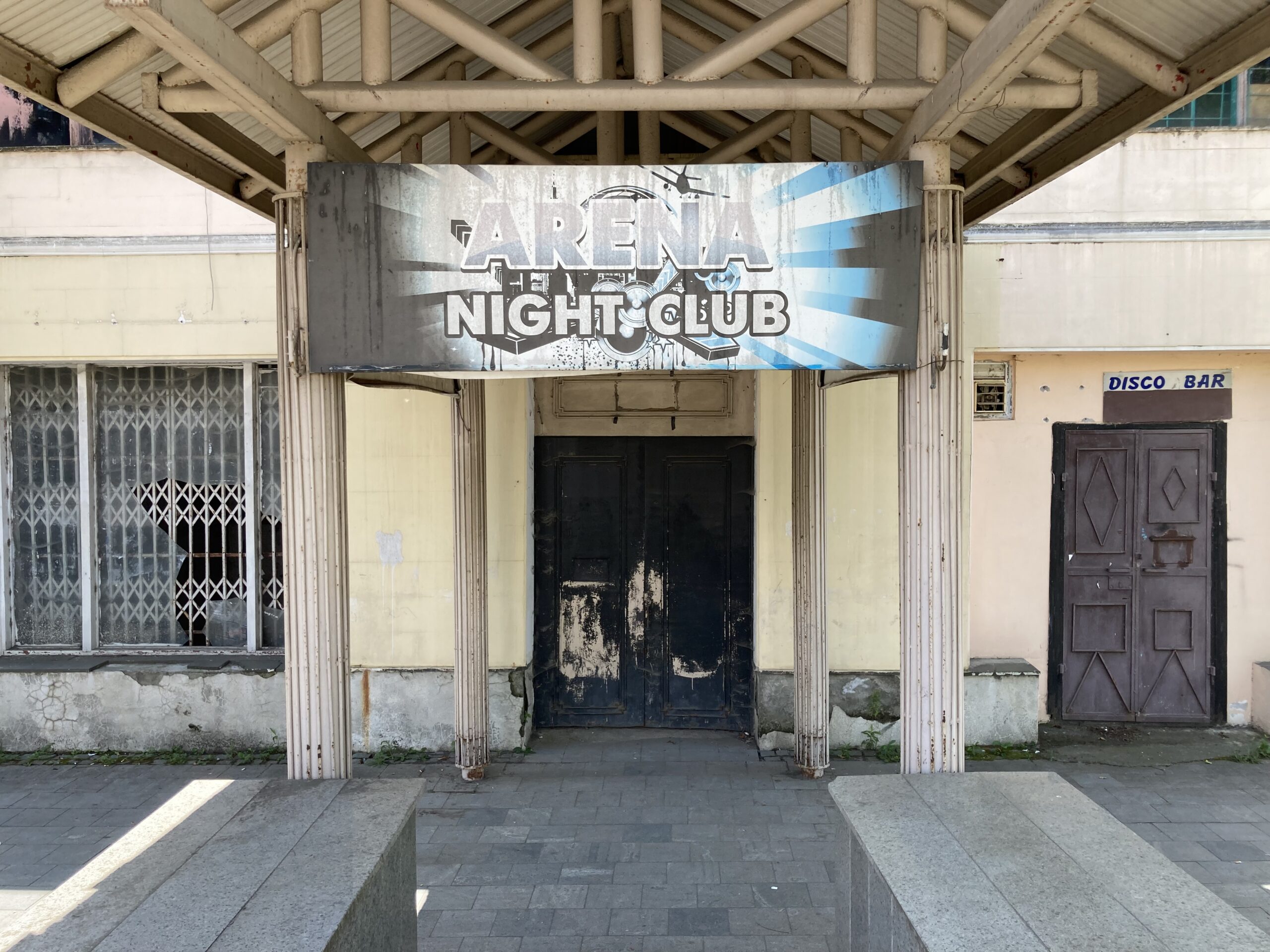
As I was rolling back to where my minibus should depart from (walking was out of the question after that massive lunch) I came across this little “club” that must have ceased its operations decades ago given its ruinous state. It just reinforced this idea that was brewing inside of me for the last few days, something I had not noticed in Tbilisi years ago. This country is going through some serious depopulation, at least in its more rural parts. It is truly a saddening sight, all those closed down clubs and markets, entire streets devoid of life, beaches with no one sunbathing, hotels abandoned to their fate. It is not unheard of in the ex-USSR geography as a whole, but for the uninitiated to the region, it is remarkable, nonetheless. I can only hope that one day more people will visit Poti again, and Kobuleti, and the many others like them. Maybe one day people will actually party in the Arena Night Club, as they once used to, some decades ago.
